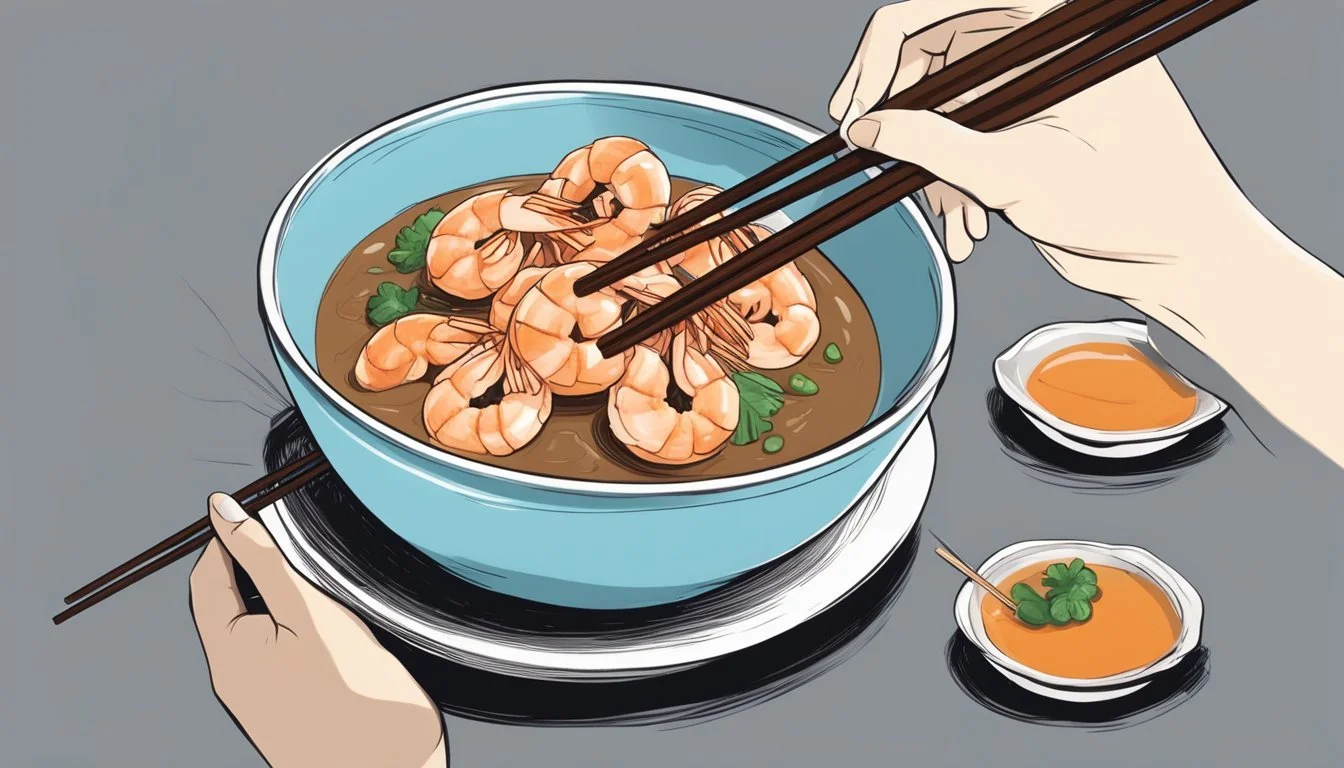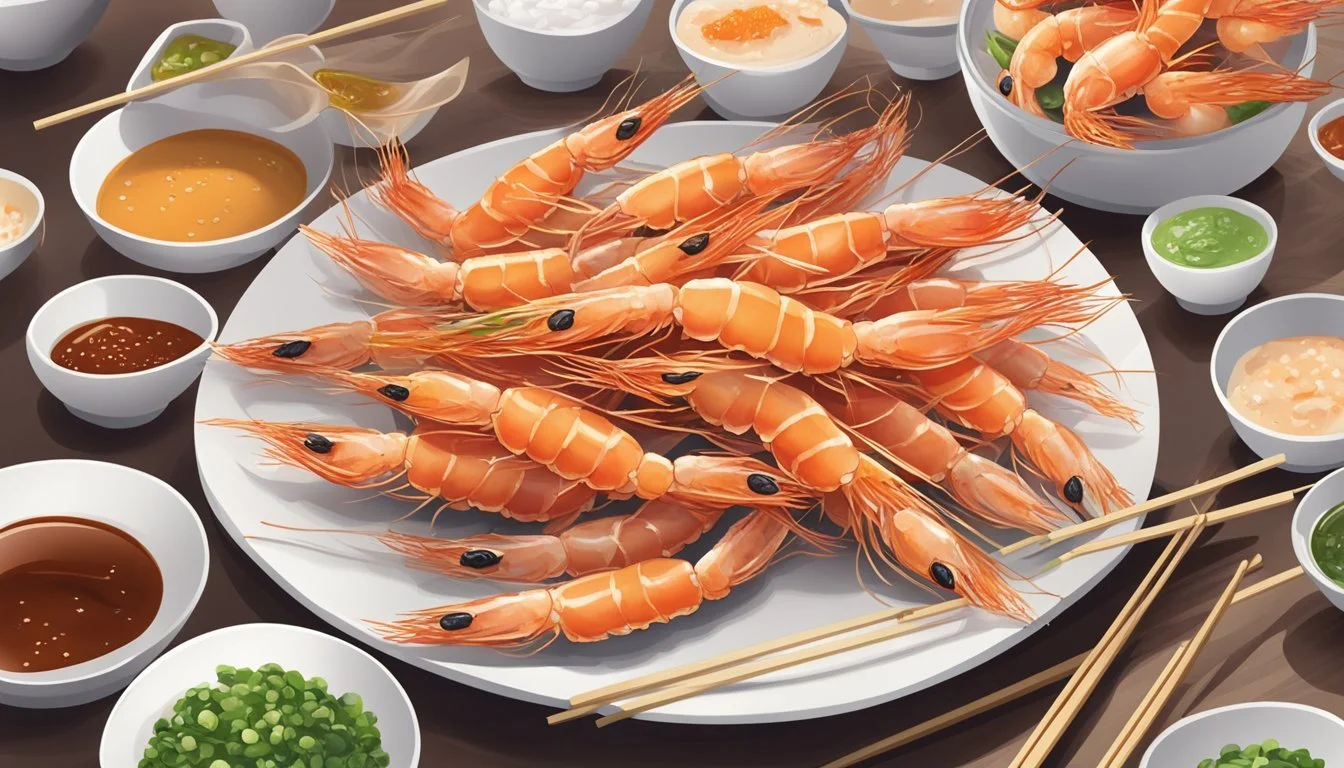How Do You Eat Xiaomi:
A Guide to Enjoying This Delicate Seafood
Xiaomi shrimp, (What wine goes well with shrimp?) not to be confused with the tech brand, are a variety of small shrimp enjoyed across various cuisines for their delicate texture and flavor. Eating xiaomi requires an understanding of the intricate balance between simplicity and technique, mirroring the nuanced approach taken in their preparation. They can be served in multiple ways, often reflecting regional culinary traditions, and provide an excellent source of protein with a low calorie count.
One approach to eating xiaomi shrimp is to handle them with fingertips, carefully removing the shell while leaving the tail intact, a method that's particularly handy when consuming shrimp in casual settings. In more formal circumstances, diners might opt for utensils to delicately remove the shell and tail, ensuring the experience remains elegant. Given their small size, xiaomi shrimp also make an ideal feature in a variety of dishes—from appetizers to main courses—often requiring minimal cooking time to preserve their tender quality.
When cooking xiaomi shrimp, it is crucial to avoid overcooking, as doing so can diminish their natural succulence. Strategies for achieving perfectly cooked shrimp include boiling for just a few minutes or quickly sautéing with seasoning to enhance their flavor. With careful attention, xiaomi shrimp can be savored for their true, subtle taste, lending themselves to a sophisticated dining experience.
Understanding Xiaomi Shrimp
Xiaomi shrimp, a type of small shrimp, offers a unique culinary experience. This section provides details on its species, nutritional value, and how it is used in cooking, ensuring optimal selection and preparation for the best dining experience.
Species and Characteristics
Xiaomi shrimp are categorized as a tiny shrimp variety that is often found in Asian cuisine. They are typically smaller than medium shrimp, which are often more common in Western dishes. Xiaomi shrimp, being smaller, have a more delicate texture and a sweeter flavor profile compared to larger varieties such as jumbo shrimp or colossal shrimp.
Nutritional Value
Despite their small size, Xiaomi shrimp pack a high protein content with minimal calories, providing substantial health benefits. They are low in fat and carbohydrates, making them a beneficial addition to many diets. The meat of Xiaomi shrimp, like other seafood, contains essential nutrients and minerals.
Culinary Context
In Asian cuisine, Xiaomi shrimp are often consumed live or incorporated into dishes where their small size can be appreciated. These shrimp are versatile and can be used in various shrimp recipes, including soups, salads, and as a garnish for main courses.
Purchasing Guide
When looking for Xiaomi shrimp, they can be bought live or frozen. Shoppers should seek freshness in live shrimp, characterized by a firm body and active movement. Frozen shrimp are also a common option and should be free from freezer burn or an overpowering fishy smell.
Storage Recommendations
To preserve the shrimp's freshness, proper storage is key. If consumed within a day, maintaining them in a cold environment, such as a refrigerator, is necessary. For longer shelf life, freezing is recommended. For frozen shrimp, they should be kept in their original packaging or an airtight container.
Preparation Essentials
Prepare Xiaomi shrimp by ensuring they are properly peeled and deveined if needed, with head-on or head-off as per the recipe requirement. Rinse them under cold water before cooking. Smaller shrimp often have softer shells, which can sometimes be consumed after proper cooking.
Cooking Techniques
Xiaomi shrimp cook quickly due to their size, making them perfect for boiling, frying, grilling, or broiling. They require close attention to prevent overcooking, which can result in a tough texture. Typically, just a couple of minutes is enough for Xiaomi shrimp to turn opaque, indicating they are ready to be served.
Cooking Xiaomi Shrimp
In cooking Xiaomi shrimp, one aims for the perfect balance between flavor and texture. These small shrimp can be prepared using a variety of techniques, each bringing out unique aspects of their delicate taste and tenderness.
Boiling and Blanching
To boil Xiaomi shrimp, bring a pot of water to a boil and add a mix of salt and optional aromatics like stock or a shrimp boil seasoning. The shrimp should be cooked briefly, just until they turn pink and opaque, to avoid rubberiness. Immersing them in an ice bath immediately afterward halts the cooking, preserving their tender texture.
Sautéing and Frying
For a quick and flavorful sauté, cook Xiaomi shrimp in a pan with olive oil and a touch of garlic. They require minimal time, usually around 2-3 minutes each side, to achieve a light golden hue. Frying the shrimp, possibly in a light tempura batter, transforms them into crispy, golden morsels. Maintain the oil at a moderate temperature to ensure even cooking.
Grilling and Broiling
Grilling imparts a distinct char and smoke flavor. Thread Xiaomi shrimp onto skewers, brush lightly with oil, and place on the grill. They only need a few minutes per side to cook through. Broiling in the oven gives a similar charred texture; by placing the shrimp close to the heat source, each one quickly cooks, taking on a delicate smokiness.
Baking and Roasting
To bake or roast Xiaomi shrimp, preheat the oven and season the shrimp with oil, salt, and cumin for a fragrant twist. Spread them in a single layer for even cooking. The key to a crispy outcome is a high oven temperature and a short cooking time, making sure the shrimp remain succulent inside while achieving a slightly crisp exterior.
Flavor Pairings and Recipes
In preparing Xiaomi, a small shrimp, one maximizes flavor by selecting herbs, sauces, and complementary ingredients that enhance the delicate taste of the shrimp. Incorporating these elements into popular recipes ensures a delightful culinary experience.
Herbs and Spices
Lemon and Lemon Juice: Their acidity highlights the sweetness of Xiaomi.
Salt: Essential for seasoning, it brings out the shrimp's natural flavors.
Old Bay: A classic with seafood, especially for peel-and-eat Xiaomi.
Cumin: Adds a warm, earthy note when used sparingly.
Cajun Seasoning: Ideal for a spicy twist in shrimp boils and gumbos.
Sauces and Dips
Cocktail Sauce: A tangy, zestful companion for shrimp cocktails. (What wine goes well with shrimp cocktail?)
Olive Oil: A base for marinades, it pairs well with garlic for simplicity.
Curry: Serves as a rich, flavorful sauce for shrimp dishes.
Ranch: A creamy alternative for dipping popcorn shrimp.
Complementary Ingredients
Garlic: Elevates the flavor profile with its pungent taste.
Corn: Adds sweetness and texture, especially in shrimp boils.
Avocado: Creamy and rich, a perfect pairing for Xiaomi in salads or tacos.
Pasta: Serves as a delicate base for shrimp sauces.
Risotto: Absorbs the flavors of shrimp for a luxurious dish.
Popular Recipes
Shrimp Cocktail: An elegant starter featuring Xiaomi with cocktail sauce.
Shrimp Boil: Combines Xiaomi, corn, and potatoes in a seasoned broth.
Gumbos and Soups: Hearty, flavorful meals where Xiaomi adds depth.
Stews: Xiaomi contributes to a rich, comforting dish with a combination of spices.
Peel-and-Eat: Often served with a seasoning blend and melted butter for casual dining.
Popcorn Shrimp: A crispy snack, flavored with Cajun seasoning and served with a selection of dips.
Serving and Presentation
When serving xiaomi, the key is to maintain the integrity of the delicate shrimp while enhancing its flavor and visual appeal.
Serving Techniques
For xiaomi, utilizing forks or hands is common depending on the formality of the setting. In more formal settings, a small fork may be provided for diners to easily spear and consume the shrimp. In casual settings, it is perfectly acceptable for diners to eat xiaomi with their hands, often after a gentle squeeze of a lemon wedge to add acidity.
Plating Styles
The presentation of xiaomi should showcase its aesthetic, typically following a simple yet elegant plating style. Arrange the small shrimp neatly around the edge of a chilled plate or bowl. If creating an ice bowl, place shrimp on the ice to keep them cold and amplify the visual impact. A garnish of finely sliced green onions or a sprig of dill (how long does dill last?)can provide a pop of color.
Accompaniments
Xiaomi is often served with a variety of accompaniments that complement the flavors and add textural contrast. A fresh salad, steamed vegetables, or light bread serve as excellent sides. These sides should not overpower the delicate taste of the shrimp but should enhance and contrast its natural flavor.
Pairing with Drinks
When paired with beverages, balance is key. Light wines such as a crisp Sauvignon Blanc or a dry Riesling can complement the dish without overshadowing it. For beer enthusiasts, a light and refreshing lager or pilsner can act as a palate cleanser between bites. Always ensure refreshments are served at the appropriate temperature to match the dish.
Food Safety and Sustainability
When consuming Xiaomi or any small shrimp, food safety measures are essential to prevent illness, while sustainability practices ensure the protection of the species and its environment.
Safe Handling Practices
Consumers must practice safe handling of Xiaomi shrimp to prevent cross-contamination. This includes thoroughly cleaning shrimp and maintaining separate utensils and cutting boards for seafood to avoid contact with other raw foods. Cooking Xiaomi to the proper temperature of 145°F (63°C) is crucial for eliminating harmful bacteria.
Sustainability Concerns
The choice between farmed and wild Xiaomi shrimp can significantly affect sustainability. Farmed shrimp often comes with concerns over the use of antibiotics and impact on local ecosystems. Consumers should look for shrimp that has been certified by reputable organizations to ensure they are supporting sustainable fishing practices.
Ecological Impact
The ecological impact of shrimp farming on species and the environment is considerable. Overfishing of wild populations can lead to ecological imbalances. Choosing Xiaomi shrimp from sources that follow sustainability guidelines is paramount to protect marine ecology and the environment. Consumers can contribute by preferring shrimp from fisheries that enhance species' viability and minimize environmental damage.
Conclusion
Eating dried shrimp, referred to as xiaomi in Chinese cuisine, comes with a rich tradition of culinary use. They possess a unique, sweet flavor, and a delightfully chewy texture, making them a versatile ingredient in many dishes. Chefs and home cooks alike value the small shrimp for their ability to impart a concentrated seafood essence to soups, dumplings, and stir-fries.
When incorporating xiaomi into recipes, they are often soaked or rehydrated to soften their texture, enhancing the dish's overall sensory experience. Their small size should not be underestimated, as these tiny shrimp play a crucial role in the layers of flavor within Asian gastronomy.
In the pursuit of culinary exploration, individuals are encouraged to experiment with xiaomi, discovering the distinct taste and the culinary depth they bring to the table. They should feel confident in employing this ingredient, knowing it is a staple in numerous traditional recipes and a testament to the rich diversity of Asian cuisine.
Indeed, as one integrates xiaomi into their cooking repertoire, they will appreciate the shrimp's ability to elevate even the simplest of dishes with its potent flavor profile. They provide an authentic taste of Asian culinary artistry and a clear example of how a small ingredient can have a significant impact on gastronomy.








